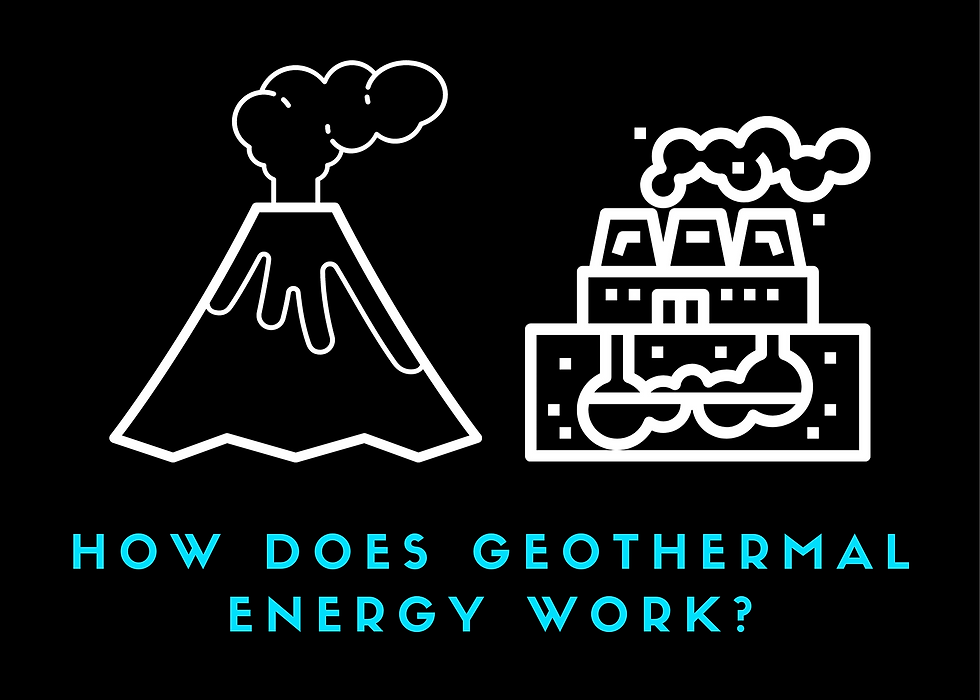How Does Geothermal Energy Work?
- Jack Dodson

- Nov 21, 2021
- 2 min read
Geothermal energy is one of the renewable energies that we will rely on more and more as we shift away from fossil fuels. But how does it actually work? How can heat from deep underground be turned into energy?
Geothermal energy is primarily used in volcanically active places like Iceland and Japan because it relies on the magma from these volcanoes. The magma heats underground rivers and pools, which can reach up to 300ºC. The main way to harvest geothermal energy is by building huge geothermal power plants. At these plants, a well is drilled kilometers down to these superheated pools. As the highly pressurized and extremely hot water flows up the well, a lot of steam is created. This steam is then funneled through a pipe system where it turns the blades of a turbine, which generates power. Then, the excess water is pumped back into the ground so the process can be repeated and no water is lost.
Typical geothermal energy is not the only way to use heat for power. Another way to harness heat energy is to take advantage of soil heated by the sun. The sun can heat the soil just 1.5 meters underground to over 20ºC. Water can be pumped through underground pipes and be heated by this soil. This hot water can then be pushed through pipes in buildings, where it gives off its heat and warms the buildings. Once this cycle is completed, the water can be pushed back underground to heat up again. Not only is this process very sustainable because it uses much less power to push the water through these pipes than it does to heat a building using standard heaters, but it can be used in many more places than typical geothermal because the soil is heated by the sun, not pools deep underground.
As climate change progresses, we need to pursue greener technologies. Using heat for energy, whether that is geothermal or otherwise, is part of the solution to eliminating fossil fuels. If you want to about the other parts of this solution, my next few blogs will be about other clean energies.

Learn more:





Comments